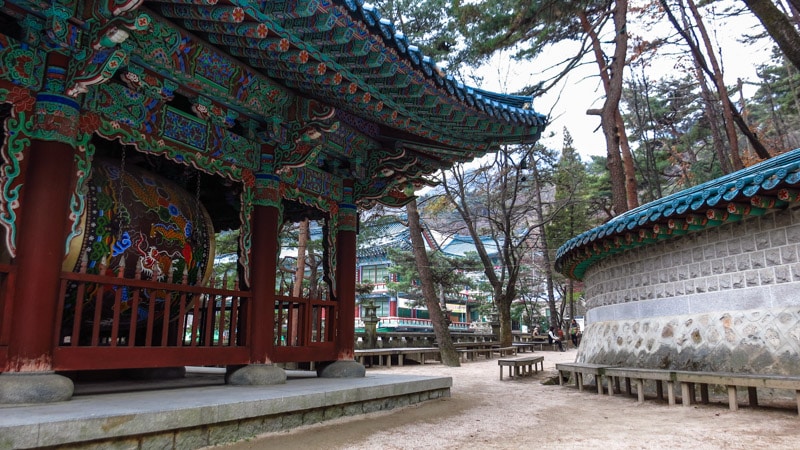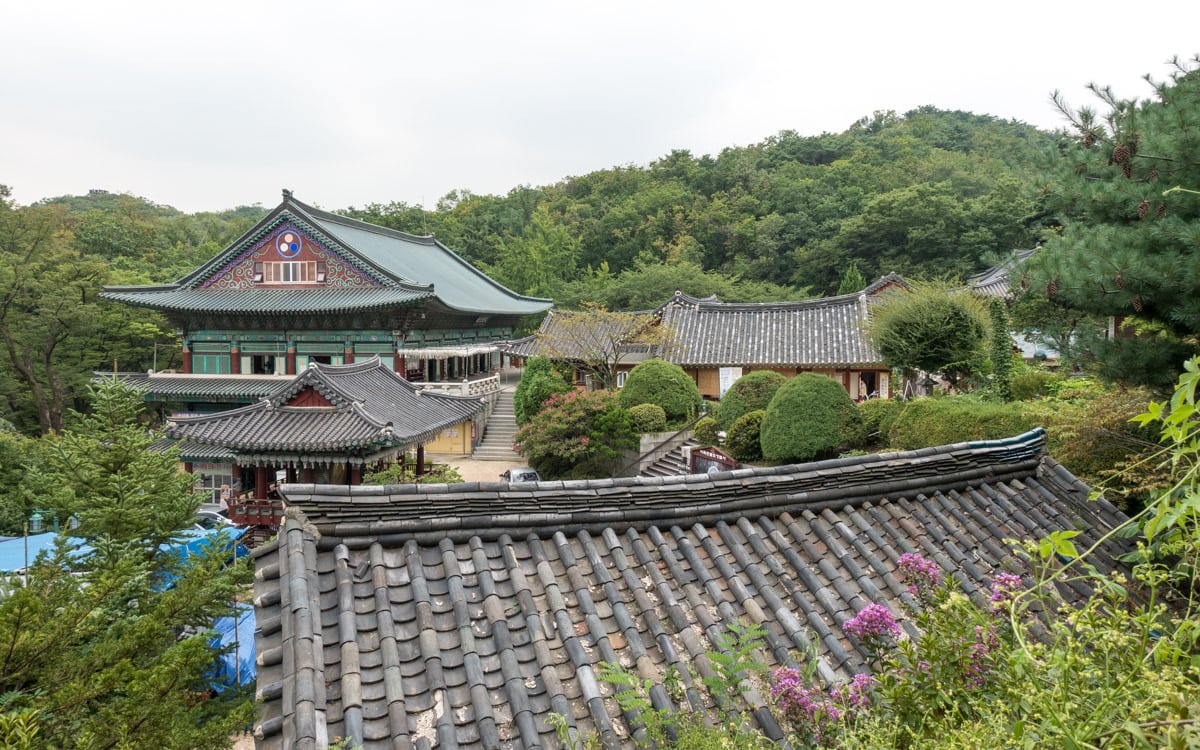
Hwagyesa Temple, of the Chogye Order, is a Buddhist temple surrounded by beautiful scenery at the foot of Mt. Samgaksan in Suyu-dong, Gangbuk-gu. Walking around the peaceful temple grounds surrounded by mountains, running streams, and nature makes any visitor feel like they are far from the urban maze of Seoul.
Construction on the original temple was completed by Zen Master Shin Wol in 1522 during the reign of King Jungjong (1506–1544).
In 1618, the temple was destroyed by a fire. It is believed that it was reconstructed the following year.
In 1866, the temple became funded and supported by King Gojong with the help from his father, Huengseon Daewongun, and other royal family members and elders. It was completely restored with their help and funding.
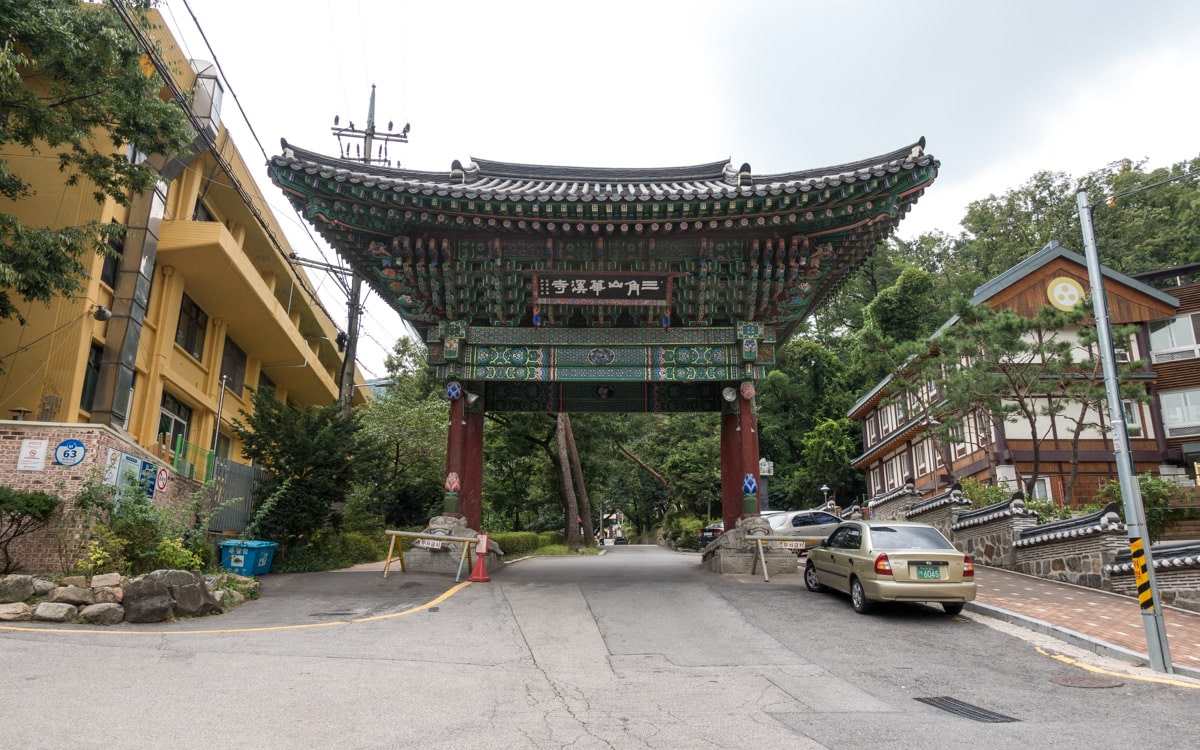
The style of construction is early architectural with characteristics of wooden architecture of the late 19th century. The main hall, dating back to 1870, is known as Daeungjeon. The grounds also have two shrines, two towers, and two pavilions, with one housing a bronze bell.
People from around the world have made their way to Hwagyesa as it has been well known as an important Zen center. Also offered is a templestay program where visitors can learn what it is like to live like a Buddhist monk.
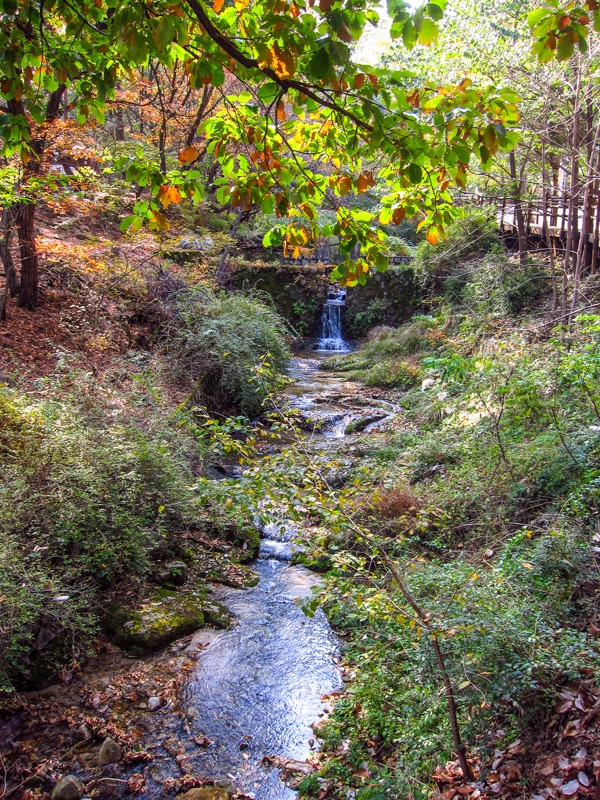
Flowing nearby is a stream known as Oktakcheon which has been known to help cure diseases of the skin and stomach. Legend has it that the stream was formed by crows slowly pecking away at the rocks.
What to see at Hwagyesa Temple
Daeungjeon Hall
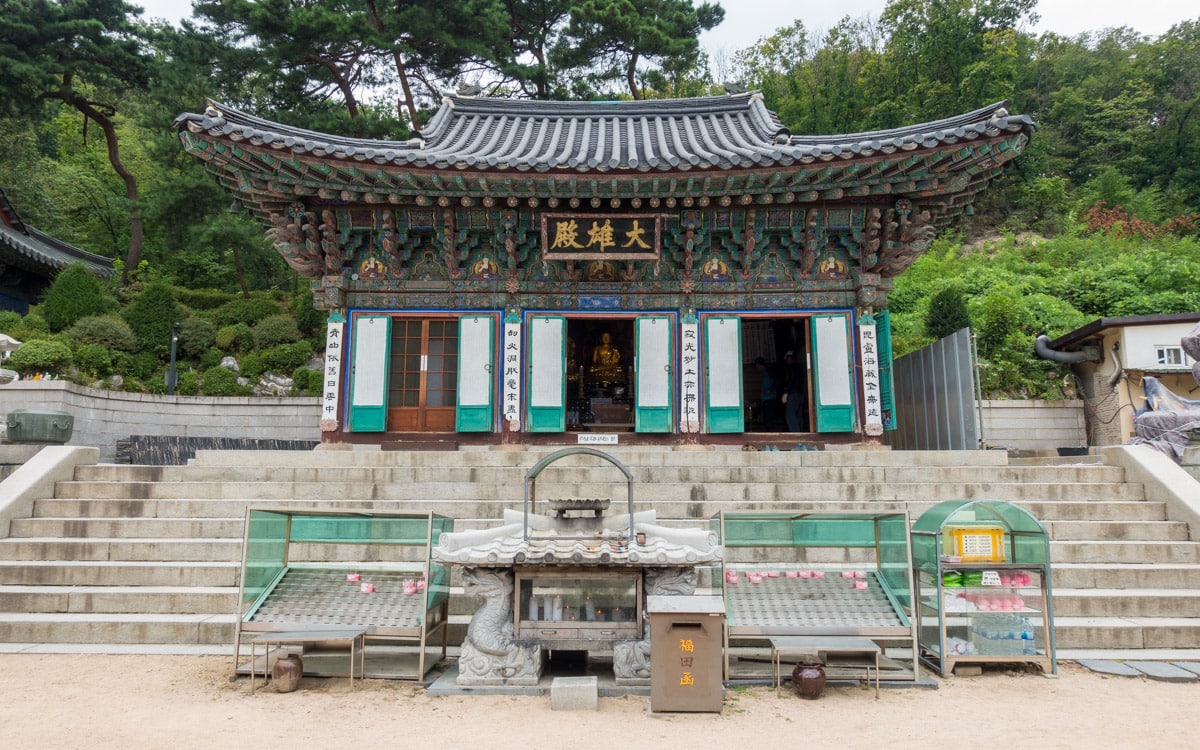
Daeungjeon Hall is the main hall of Hwagyesa Temple. The building was constructed in 1870 after receiving funding from King Gojong, his father Huengseon Daewongun, and other royal family members.
Daeungjeon has 3 kan on the front side and 3 kan on the side. A kan is an interval between pillars. The roof features a one story hip and gable roof with characteristics of 19th century wooden architecture.
Unique are paintings of the life of Buddha found on the panel walls. Calligraphy of Huengseon Daewongun can also be seen on the tablet and the columns.
A statue of Amita used to be found inside, but has since been removed. Housed here are the statues of Buddha Triad including Sakyamuni and two Bodhisattvas.
A daebang can be found in front of this hall. A daebang is a structure that consists of a prayer hall, monks’ room, kitchen, and living room. It was common for most royal temples in Seoul during the late Joseon Dynasty to have these buildings.
Hwagyesa Bronze Bell
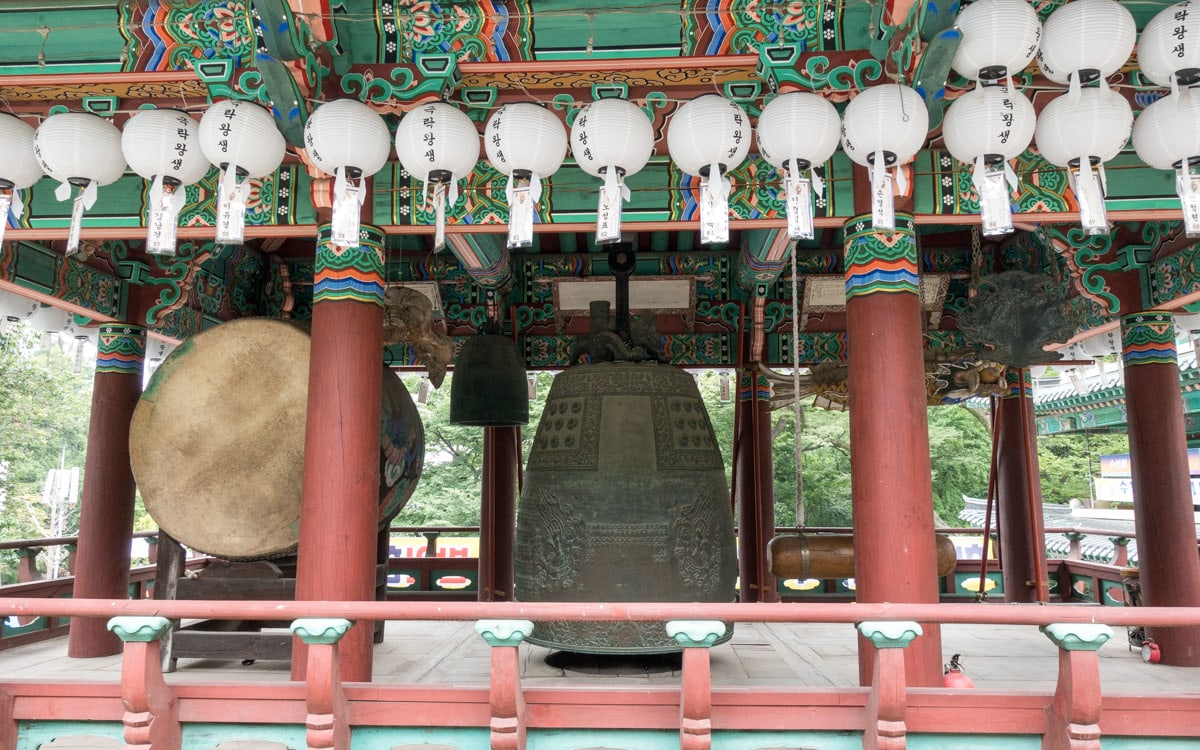
The Hwagyesa Bronze Bell is a bronze bell made during the late Joseon Dynasty by a famous artisan and Buddhist monk known as Sainbigu. Sainbigu was a craftsman who created bronze bells all around the country during the reign of King Sukjong.
The coating of the bell features a green patina, or tarnish which is corrosion caused by age and exposure to the weather and elements. It features no sound pipe, unique to Korea. It features a double dragon loop and a body with the rim curved slightly inward.
The upper part of the features Sanskrit inscriptions contained in double circle frames, four lotus boxes decorated with a floral design, and four memorial tablets.
The middle section features an inscription telling of the story of how the bell was made.
The lower section encircles the rim. It is decorated with fully bloomed lotus flowers and vines and characterizes the works of Sainbigu.
Similar bells, considered an important source of knowledge during this period, can be found at Sutasa Temple in Hongcheon (1670), Cheongnyongsa Temple in Anseong (1674), and Tongdosa Temple in Yangsan (1686). All were made by the same maker, Sainbigu.
Hwagyesa Temple Information
Admission
Free
How to Get Here
Take Subway Line 4 to Suyu Station (Exit 3). From here, take Bus 2 to the stop for Hansin University. Walk slightly uphill on Deongneung-ro for another 5 minutes until you reach a gate.
Map
Nearby Sights
April 19th National Cemetery
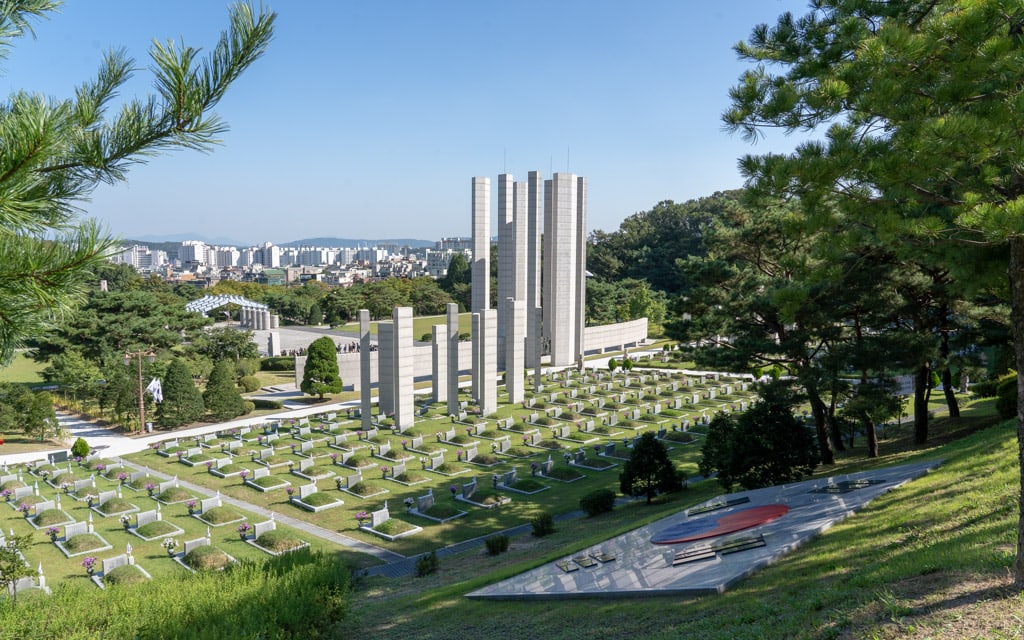
The April 19th National Cemetery is a cemetery and memorial dedicated to the 224 lives lost during the April 19 Revolution protests. During these protests, which took place between April 11 and April 26, 1960, hundreds of citizens, mostly students, were killed or injured by the authoritarian government ruled by President Syngman Rhee. Rhee was a dictator who used his power for corruption and to rig elections. These heroes sacrificed their lives for freedom, democracy, and justice for all of Korea.
Dream Forest
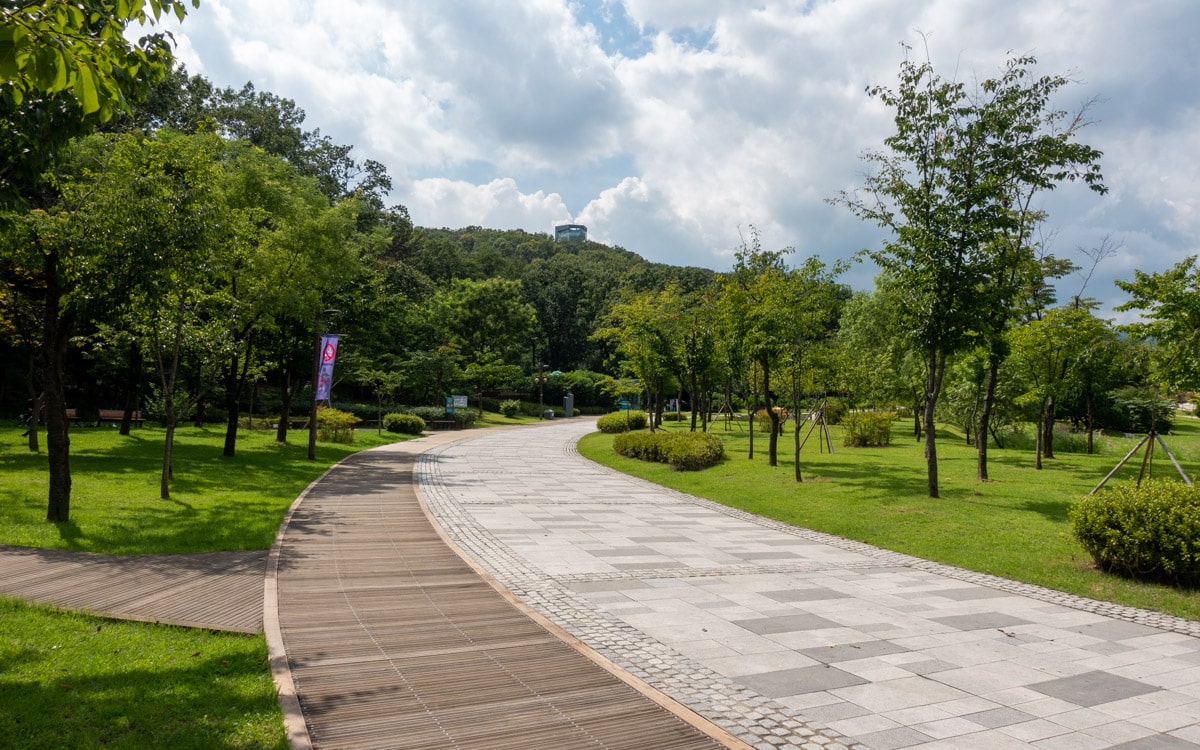
Dream Forest is a large park located in Gangbuk-gu which features open spaces and many walking trails. The area was formerly known as Odong Geullin Park. On October 17, 2009, renovation work was completed and the park was renamed as Dream Forest.
Gilsangsa Temple
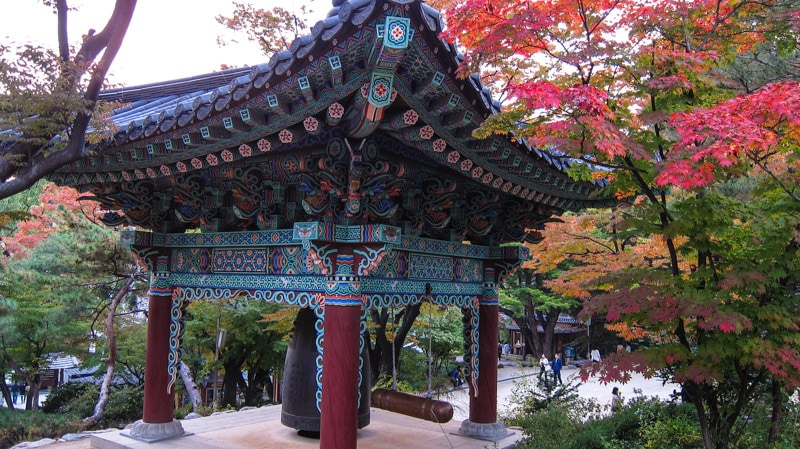
Gilsangsa Temple is a fairly new and popular Buddhist temple complex surrounded by nature and beauty in hills of Seongbuk-dong, a neighborhood of Seoul. Since 1997, Gilsangsa has become popular with both locals and tourists for its harmony with nature.
Sukjeongmun Gate
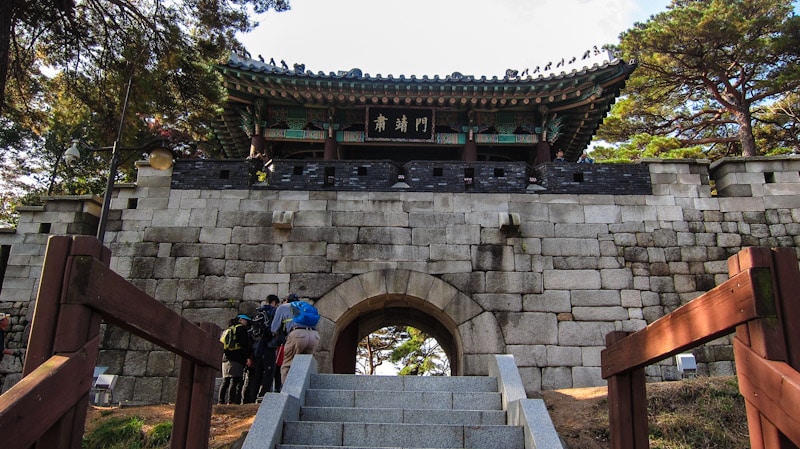
Sukjeongmun Gate is the most northern of the Four Main Gates of Seoul Fortress. It is also known as Bukdaemun, literally meaning North Big Gate. When originally built in 1396, it was known as Sukcheongmun. In the 16th century, it was renamed to Sukjeongmun, which means Rule Solemnly Gate.
Additional Resources
Viator by TripAdvisor
Viator is a popular online platform that helps travelers book tours, activities, and unique experiences worldwide, including in Seoul. It connects users with a wide selection of options – from sightseeing tours to cultural events and outdoor adventures – all offered by local providers.
Book Recommendations
For an immersive guide to Seoul, many travelers choose to bring a book along. Fodor's Seoul, for example, offers detailed recommendations on sights, restaurants, maps, and travel tips.
Learn more about book recommendations
Rakuten
Save money while exploring Seoul with Rakuten's cashback program. Book your hotels or other services through Rakuten and enjoy cashback rewards and exclusive deals.
If you sign up using the link below, you could earn $30 cashback on your first purchase over $30.
Klook
Klook offers discounted tickets and reservations for various attractions and services in Seoul, from theme parks and museums to tours and transportation options.
If you sign up using the link below, you will get $5 off your first order.
Last Updated on Jul 5, 2023
